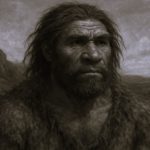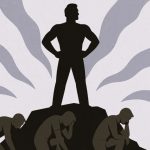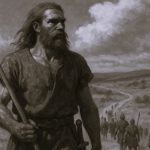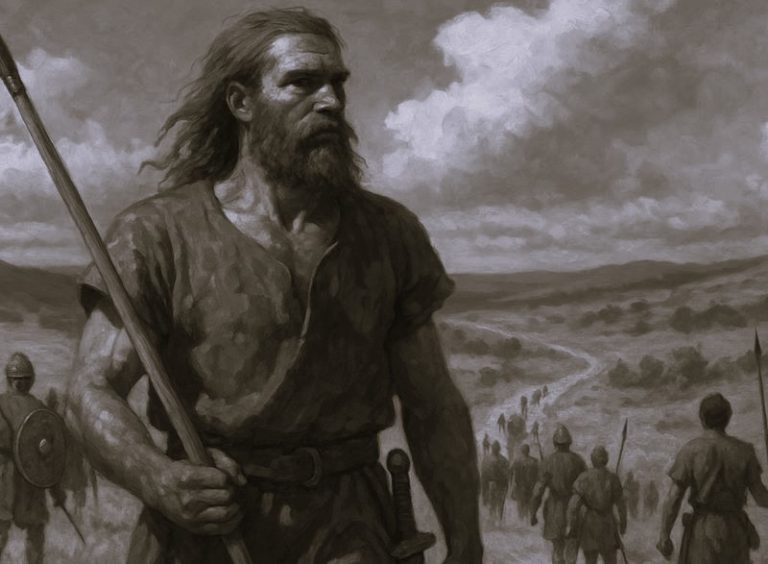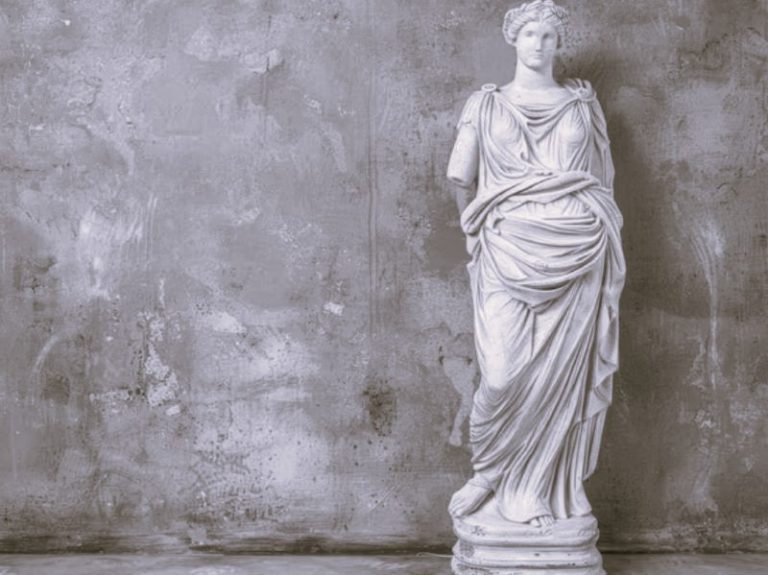


By Cecily Hilleary
Reporter
Voice of America
Who Were the Puritans?
Overview

They sailed to the New World under appalling conditions: One hundred and two English men, women and children, crammed onto a cargo ship that was only about 30 meters long and 7 meters wide.
The Mayflower had no cabins or beds; passengers berthed below deck wherever they could find space.

The voyage was fraught with risk: if rough seas didn’t take them, pirates might. If the passengers landed safely, they faced “famine and nakedness” and “continual danger of … savage people” and “wild beasts,” as Plymouth founder and Governor William Bradford later wrote in his “History of Plymouth Plantation.”
The Pilgrims were the first group of Puritans to sail to New England; 10 years later, a much larger group would join them there.
To understand what motivated their journey, historians point back a century to King Henry VIII of England. When the Roman Catholic pope refused to annul Henry’s marriage to Catherine of Aragon, Henry severed relations with Rome and formed the Church of England, naming himself its supreme leader. Membership in the new church was mandatory.

But a faction of worshipers, the Puritans, believed Henry’s church held onto too many of the trappings of Catholicism and needed to revert to the simpler worship of the early Christians.
“The Puritans wanted to do away with a set of prayers as in the ‘Book of Common Prayer,’ stained glass, incense, priestly vestments and the like,” said George Washington University professor David J. Silverman, an expert in Native American and colonial history and author of “This Land is Their Land.”
“They felt these features distracted from the word of God as preached from the Bible,” Silverman said.
Puritans and Pilgrims
The Puritans also opposed state interference in matters of religion and centralized religious control. They wanted to select their own ministers and decide on their own rules while remaining a part of the Church of England.
But a small group of radical Puritans broke away from the Church of England entirely, a breach of English law for which they were persecuted. They were called Separatists.
“That involved the arrest and imprisonment of dissenting ministers and lay dissenters who failed to attend the state church or who refused to conduct their marriages and baptisms there,” Silverman said. “The English state also banned the publication of dissenting tracts.”
The terms “Puritan” and “Separatist” are sometimes used interchangeably, but as Silverman explained to VOA, they are different groups.
“The Puritans had a formal aim of purifying or reforming the Church of England. But the Separatists had given up on that goal. And so, technically, they aren’t Puritans,” he said. “But in every other respect, the Separatists are part of the Puritan movement. They have the same outlook. They follow the same principles.”
Seeking Utopia
In 1608, about a hundred separatist Puritans fled to the Netherlands, where they hoped to be able to practice their faith freely. They spent 10 years living in the city of Leiden, but hard work and poor living conditions began to take a toll on their health. They also worried that Dutch youth were corrupting their children.
So in 1620, a fraction of the congregation — about 37 Separatists — decided to sail to America to form a new religious colony. They would come to be known as the “Pilgrims.”

They sailed to Southampton, England, and on September 6, with backing from a London merchant and a patent to settle in the Virginia Colony, they set sail on the Mayflower, headed for the mouth of the Hudson River, which at that time was part of the Virginia Colony.
Traveling with the Pilgrims were about two dozen non-separatist Puritans, whom the Pilgrims sometimes called “strangers,” a few servants, and a crew of 30 sailors — 102 passengers in all.
Change in Plans
After a rough crossing, the Mayflower arrived at the tip of Cape Cod on November 10. Dangerous sandbars and rough waters prevented them from reaching the Hudson River, so the Pilgrim leaders decided they should remain on the Cape.
The location was outside the Virginia Colony’s jurisdiction, which meant they did not have legal permission to settle there.
In his “History of Plymouth,” Pilgrim leader John Winthrop explained that the Pilgrims worried that once ashore, “some of the strangers amongst them” might “use their own liberty” — that is, rebel or make trouble.
To ensure lawfulness, the Pilgrim leaders drafted a temporary agreement — the “Mayflower Compact.” It bound Pilgrims and non-separatist Puritans together as a single “civil body politic,” loyal to the King of England but allowed to draft its own “just and equal laws.”

Pilgrim Edward Winslow described what happened next in his 1622 narrative “Mourt’s Relation.” For about a month, they sailed around the Cape, sending parties of men to explore inland.
On December 16, the Mayflower dropped anchor at what is now known as Plymouth Harbor. After three days of exploration, they decided to settle near the site of a Wampanoag village, Patuxet, which they would later learn had been emptied by an unknown epidemic. They named their new home “Plymouth.”
The Second Wave
In 1625 England, the new king, Charles I, began cracking down on Puritans, and a new group of them made plans to emigrate to America and settle what would be the Massachusetts Bay Colony.
In 1630, led by Puritan lawyer and lay preacher John Winthrop, 700 passengers in a fleet of 11 ships set sail for New England. Some of them settled at Plymouth, but most followed Winthrop north, to the Massachusetts Bay, where they founded the city of Boston.

During the crossing, Winthrop gave a sermon in which he laid out his vision of the future: This third English colony wouldn’t be a commercial venture but a religious experiment. Puritans would live in brotherly love according to God’s law while waiting for the pending second coming of Christ.
He warned the passengers, “we shall be as a city upon a hill, the eyes of all people are upon us.” If the experiment failed, he said, God would withdraw his support and give their enemies reason to “speak evil of the ways of God.”
‘Civilized and Savage’
The Pilgrims of Plymouth and the Puritans of Boston were by and large “pretty simple folks,” Silverman told VOA. “Their leaders were well-educated and literate, but most of them were what you might call ‘peasants.’”
Even so, most could read.
“The Puritans believed everyone should have direct access to the word of God through the Bible, so nearly everyone, including women, could read,” he said.
They weren’t going into the New World blind. They would all be familiar with Spain’s exploits in the Americas, thanks to a 16th-century book by Spanish Friar Bartolome de Las Casas, which had been translated into English as “Tears of the Indians.”
“Everything that Western Europeans thought about the potential of the Americas was shaped by Spanish accounts,” Silverman said.
The Puritans were horrified by the Spaniards’ depravity toward indigenous peoples.

“That said, their basic view was that the world was divided into civilized and savage people, Christians and pagans,” he said.
If Christians worshipped God, pagans worshipped the devil, who was a very real presence for the Puritans.

“[The devil] was active in the world, even inside their communities,” Silverman said. “So, if you believe you are practicing the true faith and you’re confronted with people you believe are savage devil-worshippers, you believe you have every right to seize the upper hand with them — violently.”
Who Were the Wampanoags?
Overview

When the Pilgrims set sail for America, southeastern New England was populated by a number of tribes, among them, the Wampanoags, Narragansetts and the Pequot, all of whom had established territories, as well as political and trade relations with one another.
But it would be the Wampanoags with whom the Pilgrims first established relations; the Pilgrims chose to settle the Wampanoag village of Patuxet, which they found abandoned. They would later learn that all of the villagers had died in recent epidemic.

It would be many weeks before the Pilgrims met any Wampanoag face to face. The Natives watched the newcomers from a cautious distance. This wasn’t their first encounter with Europeans: Spain had explored and mapped New England a century earlier. France had established a colony in Maine in 1604, and the English and Dutch had been trading with Indians along the New England coast for decades.
Not all these Europeans had good intentions.
“Sometimes Europeans would engage in battle with the Natives,” said David Weeden, historic preservation officer for the Mashpee Wampanoag Nation, which, along with the Wampanoag Tribe of Gay Head (Aquinnah), are the only federally recognized tribes in the state of Massachusetts today.
“Sometimes they took Natives as hostages or slaves,” Weeden told VOA. “And they brought diseases.”
He was referring to an as-yet-unidentified epidemic that ravaged what is now known as New England from 1616 to 1619. Historians and epidemiologists estimate that coastal tribes lost anywhere from 50% to 90% of their populations.
Tribal Structure
At the beginning of the 17th century, Weeden said, nearly 70 Wampanoag villages dotted southeastern New England, with a combined population of about 12,000 citizens.
Like most Native peoples, the Wampanoag had no written language; they passed down their history orally. Today, much of what is known about them comes from Pilgrim records and accounts, but Weeden cautions against relying on those too heavily.

“Not all of our words have correlations in English. The Pilgrims were interpreting what they observed and what they were being told. But they were reading everything in a Christian context,” he said.
Each Wampanoag tribe had a sachem or leader. Collectively, these sachems answered and paid tribute to the Wampanoag Massasoit, a title meaning paramount leader. In 1620, that leader was Ousamiquin, a Pokanoket Wampanoag, based near present-day Bristol, Rhode Island.
The Wampanoag did not live in a vacuum. They were part of a greater landscape of tribes — among them the Pequot, Mohegan, Narragansett and Nipmuc — with whom they traded and shared information.
The Nauset tribe of Cape Cod would have alerted the Wampanoag to the Mayflower’s arrival at the tip of Cape Code just weeks before, likely complaining about how the Englishmen had plundered Nauset food and supplies and disturbed graves. Mayflower passenger Edward Winslow would later admit to the deed.
“In the houses, we found wooden bowls, trays and dishes, earthen pots, handbaskets made of crab shells,” Winslow wrote in “Mourt’s Relation,” a history of the Pilgrims’ exploration and settlement.
“Some of the best things we took away with us,” he wrote.

Now, with the Mayflower landed, it was clear to the Wampanoag that the foreigners had no intention of leaving any time soon. Within a few days, work parties began constructing buildings on Patuxet’s ruins.
Evidence of the epidemic was everywhere. Pilgrim leader William Bradford would later write in a two-volume “History of Plymouth” that many victims of the “late great mortality” were not able to bury one another: “Their skulls and bones were found in many places lying still above the ground where their houses and dwellings had been.”
Weeden said the Wampanoag were shocked that the English would take up residence in a place associated with so much suffering and death. Wampanoag would have left it undisturbed.

The Wampanoag kept their distance through the winter. Sometimes, as Pilgrim leader William Bradford wrote later in his two-volume “History of Plymouth,” the Pilgrims spotted smoke from distant Wampanoag campfires.
“All this while the Indians came skulking about,” he said, “and would sometimes show themselves … but when any approached near them, they would run away.”
Then, one afternoon in mid-March, to Bradford’s astonishment, a Native man strolled into Plymouth and introduced himself in English as Samoset, a visiting leader from a tribe in Maine.
The Pilgrims fed him, asked him many questions, gave him some gifts, and sent him on his way.
A week later, he returned, bringing with him Tisquantum (Squanto), whose English was even better than his own. They carried a message: Ousamiquin, who was nearby with several dozen warriors, wanted to parley.
By the end of the day, the parties had negotiated a peace agreement promising, among other things, not to harm one another and to support each other in the event of an outside attack.
Squanto remained with the Pilgrims as an interpreter and “a special instrument sent of God for their good,” as Bradford later described him. Squanto taught the newcomers “how to set their corn, where to take fish, and to procure other commodities.”
Motives for Helping

Generations of historians have painted the Wampanoag — and Squanto in particular — as friendly Native Americans who reached out to the Pilgrims out of the goodness of their hearts.
That’s partly true, Weeden said.
“The Wampanoag people had been watching the English for a while and compared them to little children who didn’t know their way around,” he said. “And because they had women and children with them, the Wampanoag looked on them with empathy and compassion.”
But, he explained, his ancestors also had political motives for reaching out to the strangers.
“Two-thirds of the Nation was wiped out from disease,” Weeden said. This left them vulnerable to their political, economic and military enemies — the Narragansett, who, because they were based on the western side of the Narragansett Bay in Rhode Island, had fewer dealings with Europeans and were untouched by the epidemic.
The alliance would stand for the next 50 years.
“But [the relationship] wasn’t all ‘Kumbaya,’” Weeden said, referring to a 19th-century folk song today associated with naïve do-gooders.
“Whether it was through the propagation of the gospel or by land ownership,” he said, “the English tried to extinguish us.”

In 1675, 54 years after signing a peace treaty with the Pilgrims of Plymouth, the Wampanoag rose in a last-ditch effort to resist colonialism and were defeated.
Some Wampanoag bands died out completely; many were sent to foreign plantations as slaves. Still others, mostly Christian converts, survived. Today, generations later, their descendants are merged into two main groups, the Mashpee Wampanoag Tribe on Cape Cod and the Wampanoag of Gay Head (Aquinnah), Martha’s Vineyard.
Originally published by Voice of America, 12.21.2020, under a Government Public Domain license.
